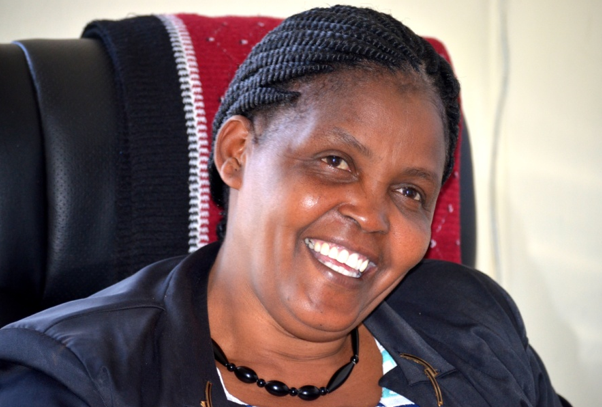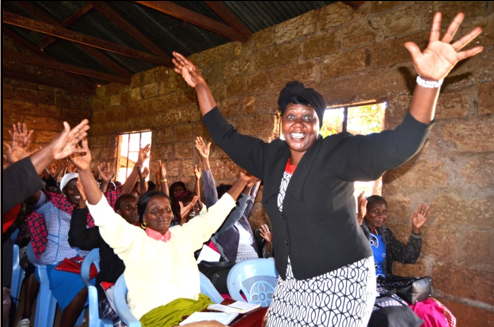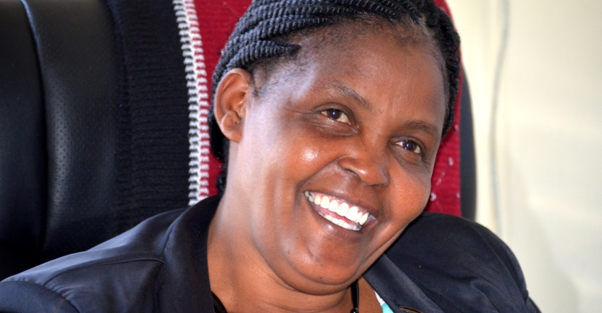It was a stroke of genius to find the intersection of early childhood development and education (ECDE) centres and children’s health. This is the verdict of an education official in Murang’a County. Beatrice Nyambura Mwangi, the Murang’a South Sub-county ECDE Coordinator, describes the day Vitamin A Supplementation (VAS) programme landed in Murang’a using ECDE centres as one of its channels of distribution as a kind of “eureka” moment. As she puts it: “All of us in the early learning system almost collectively recognised Vitamin A Supplementation (VAS) as the missing gap in establishing a strong foundation for children. When teachers were sensitised about it, they embraced it. We were all stunned by just how logical it all was.”

Beatrice is referring to the Vitamin A Supplementation Optimization Demonstration Project that is underway in Murang’a County as an effective tool to combat Vitamin A deficiency among children 6-59 months. This project is funded by Nutrition International and implemented by Centre for Behaviour Change and Communication (CBCC) in partnership with Murang’a County Government.
The World Health Organization (WHO) recommends twice-a-year Vitamin A supplementation to reduce mortality in children aged 6–59 months. In Kenya, Vitamin A Deficiency (VAD) stands at 84% among children younger than 5 years of age; the Health Management Information System data from 2016 puts VAS coverage in Murang’a at 35%. With such low figures, it made sense that the point at which children begin to acquire formal learning should also be where they begin to acquire life-long health benefits.
“It makes sense because when you go to Pre-Primary 1 (PP1), more often than not the teacher is aware of when the child is due for the next vaccination,” Beatrice states. “This collaboration between the ECDE system and VAS is quite vital.”
Through this collaboration, health workers visit ECDE centres and administer Vitamin A to the children. However, Beatrice sees the possibility of a much deeper collaboration.
“Some of the tasks health workers do can be passed on to ECDE teachers, especially Vitamin A supplementation, considering its importance. We know there is a significant shortage of health workers as well as other resources. Instead of sending the health workers every so often to the centres, the ECDE teachers themselves can be trained and the supplements availed to them.

Teachers already have a toe in the door when it comes to children’s health. Already, they care for and medicate children who fall when classes are in session,” Beatrice explains.
It would be easy for the teacher to administer VAS. For instance, when children are being admitted to ECDE centres the teachers can check the Mother and Child Health Booklet to know when the child last received the supplement and when she/he is due for the next.
Beatrice believes that even children from remote areas can benefit from VAS. Teachers are able to tell parents the days of supplementation so they can bring their children, especially those who don’t attend school.
But just what is the connection between good health and learning? According to Beatrice, healthy children enjoy continuous, uninterrupted learning. Beatrice expands “A child who is frequently unwell [from diseases such as coughs and colds] experiences a lot absenteeism and cannot get the benefit of continuous or progressive education. Without good health, the child becomes weak. A weak child does not do well”. A healthy child is quite the contrary; she/he is able to fully experience the joy of learning, asking questions, and being in a position to retain what she/he is taught.
One of the drivers for the timely distribution of VAS in Murang’a South is the use of social media, particularly WhatsApp. According to Beatrice, ECDE teachers are grouped in clusters according to their location. Each cluster has a WhatsApp group to which Beatrice has admission, like an ex officio member.

As she explains it ,“I’m not an administrator of any group, but I’m admitted to all the thirteen groups, so I might be useful in some of their discussions. Each cluster has a leader and discussions in every group are limited to Vitamin A. A member of a group might, for instance, indicate children under their care have received Vitamin A. If some people have not been reached, they share in the WhatsApp and we commence follow-up. Posting it also prompts those who have not to commenced VAS in their centres to start seeking for those services. It helps, especially in times when, for instance, a health worker feels a little too lazy to carry out their job.”
Beatrice gives the example of a time when a health worker insisted that he had administered Vitamin A in a place called Gatherangururi. When the information was posted on WhatsApp, members from this location came out to challenge that assertion. Beatrice and the members began to track the movement of the alleged Vitamin A administration and found that the health worker was not forthcoming with the truth and had not actually administered the VAS. Eventually, the children in Gatherangururi received their dose of Vitamin A.

Sometimes, Beatrice says, it is just a breakdown in communication and follow-ups are able to iron out any hiccups. “Some families are totally uninvolved in education. They’re not well informed about its importance. This is our major issue. Our challenge is to make sure all children of school-going age are in fact in school. We refer to ECDE places as centres because more goes on in there than just academics. We teach them life skills as well. That is why the Ministry of Health has identified them as a place through which children’s health issues can be tackled.”
Beatrice describes further that Murang’a South has made a step forward in child ECDE enrolment. “Some people would bring the children to school with the idea that there wasn’t much going on there except play. Now, however, the Ministry of Education has prioritized ECDE, making it compulsory that before a child joins Grade 1, they must have been in ECDE for 2 years – from 4 to 5 years of age in Pre-Primary 1 [PP] and from 5 to 6 years of age in PP2.”
Beatrice’s experience shows that ECDE is a vital foundation for life. When children acquire some of the life skills taught in ECDE centres, they tend to become well-rounded human beings later on. Her conclusion is, “When we combine it with health, especially the realisation that Vitamin A grounds the child’s health for most of the rest of her/his life, the importance of ECDE centres for the rest of the society cannot be refuted.”



